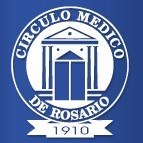What do we have in mind at the time of the prescription of antibiotics?
Keywords:
Antibiotics, Prescription, Bacterial resistanceAbstract
Recently there has been a dramatic global increase in bacterial resistance. Phisician´s attitude affects the indication of antibacterial treatment. In order to know how they make their indications in daily practice we analyzed the answers to an anonymous questionnaire to 100 MD. Differences were found in the way of prescribing among physicians. Some of them administered antibiotics without having carried out etiological studies. There was also different response from clinicians and surgeons. This highlights the need for each health institution to have a protocol for the administration of these drugs.
Downloads
References
2. OMS Resistencia a los antibióticos. Recuperado en http://www.who.int/es/news-room/fact-sheets/detail/resistencia-a-los-antibi%C3%B3ticos.
3. Lazovski J, Corso A, Pasteran F, y col. Estrategia de control de la resistencia bacteriana a los antimicrobianos en Argentina. Rev Panam Salud Publica; 41:1-7, 2017. https://www.scielosp.org/article/rpsp/2017.v41/e88/es/
4. Icolini G, Sperotto F, Esposito S. Combating the rise of antibiotic resistance in children. Minerva Pediatr 66:31-39, 2014 .
5. Roca I, Acova M, Baquero F, Carlet J, Cavaleri M, Coenen S, Cohen J, Findlay D, Gyssens I, Heuer OE, Kahlmeter G, ycol. Corrigendum to The global threat of antimicrobial resistance: science for intervention. New Microbes New Infect 6:22-29, 2015.
6. Tang, K. L., Caffrey, N. P., Nóbrega, D. B., y col (2017). Restricting the use of antibiotics in food-producing animals and its associations with antibiotic resistance in foodproducing animals and human beings: a systematic review and meta-analysis. The Lancet Planetary Health.1:e316-e327 2017. Recuperado en http://www.sciencedirect.com/science/article/pii/S2542519617301419
7. Notario, R. Microbiología para el médico. Universidad Nacional de Rosario. UNR Ed.. Rosario, 2005
8. Magiorakos AP, Srinivasan A, Carey RB, y col. Multidrugresistant, extensively drug-resistant and pandrug-resistant bacteria: an international expert proposal for acquired resistance. Clin Microbiol Infect. 18:268-281, 2012
9. Nordmann P, Dortet L, Poirel L. Carbapenem resistance in Enterobacteriaceae: here is the storm! Trends in Molecular Medicine.18:263-272, 2012.
10. Gómez, J., García-Vázquez, E., Bonillo, C., y col. Autovaloración sobre prescripción de antibióticos en un hospital universitario. Enfermedades Infecciosas y Microbiología Clínica, 32:507-510, 2014.
11. Grundmann H, Klugman KP, Walsh T, y col. Framework for global surveillance of antibiotic resistance.Drug Resistance Updates.14:79-87, 2011.
12. Rincon S, Panesso D, Díaz L, Carvajal LP, Reyes J, Munita JM, Arias CA. Resistencia a antibióticos de última línea en cocos Gram positivos: la era posterior a la vancomicina. Biomédica.34:191-208, 2014.
13. Sinkowitz-Cochran, R. L. Survey design: To ask or not to ask? That is the question. Clin Infect Dis, 56: 1159-1164, 2013.
14. Lerma, F. A. Desescalada terapéutica en pacientes críticos: una nueva formulación de dos viejas estrategias. Medicina intensiva;29:430-433, 2005.
15. Borda N, Gambandé T, Sutich E, Ponessa A, Notario R. Características de la angina debida a estreptococos beta hemolíticos no grupo A. Rev. Méd. Rosario 77: 138-141,2011.
16. Ugalde-Espiñeira, J., Bilbao-Aguirre Gómez corta, J., Sanjuan-López y col.). Programa de optimización del uso de antimicrobianos (PROA). Experiencia en un hospital secundario. Rev Esp Quimioter, 29:183-189, 2016.
Downloads
How to Cite
Issue
Section
License
Licencia Atribución-CompartirIgual 4.0 Internacional (CC BY-SA 4.0)
https://creativecommons.org/licenses/by-sa/4.0/deed.es






